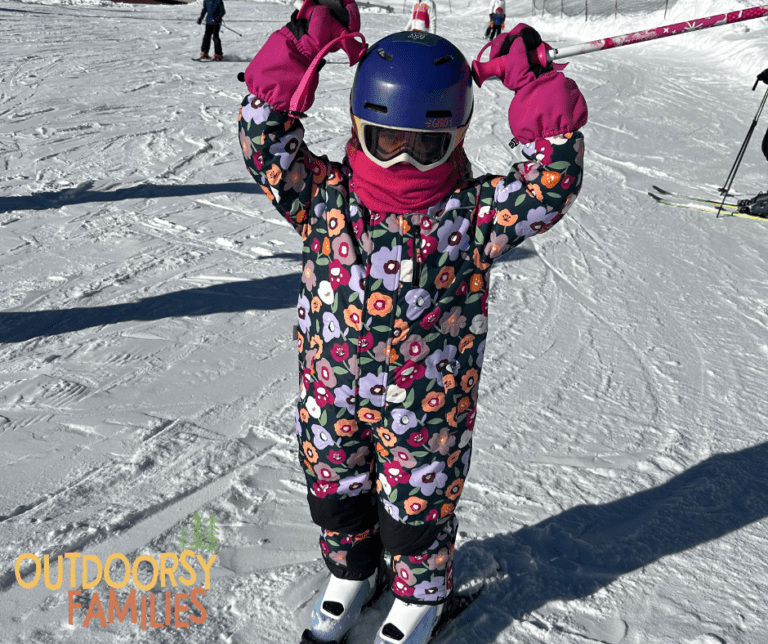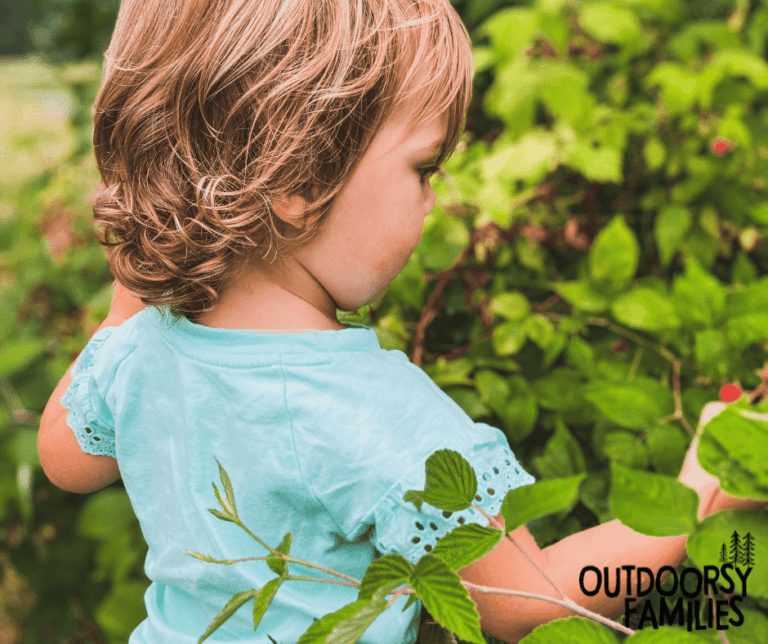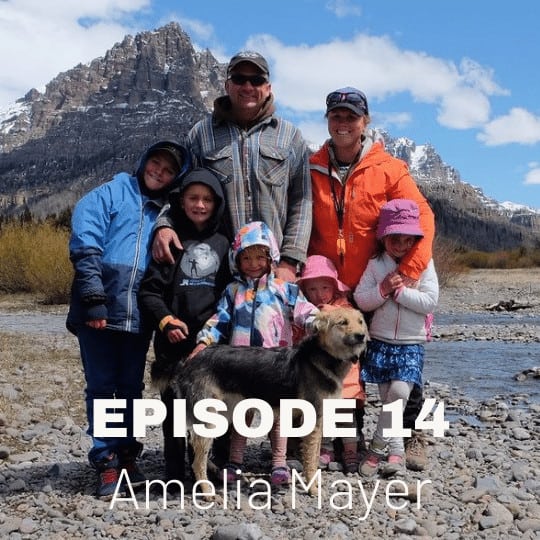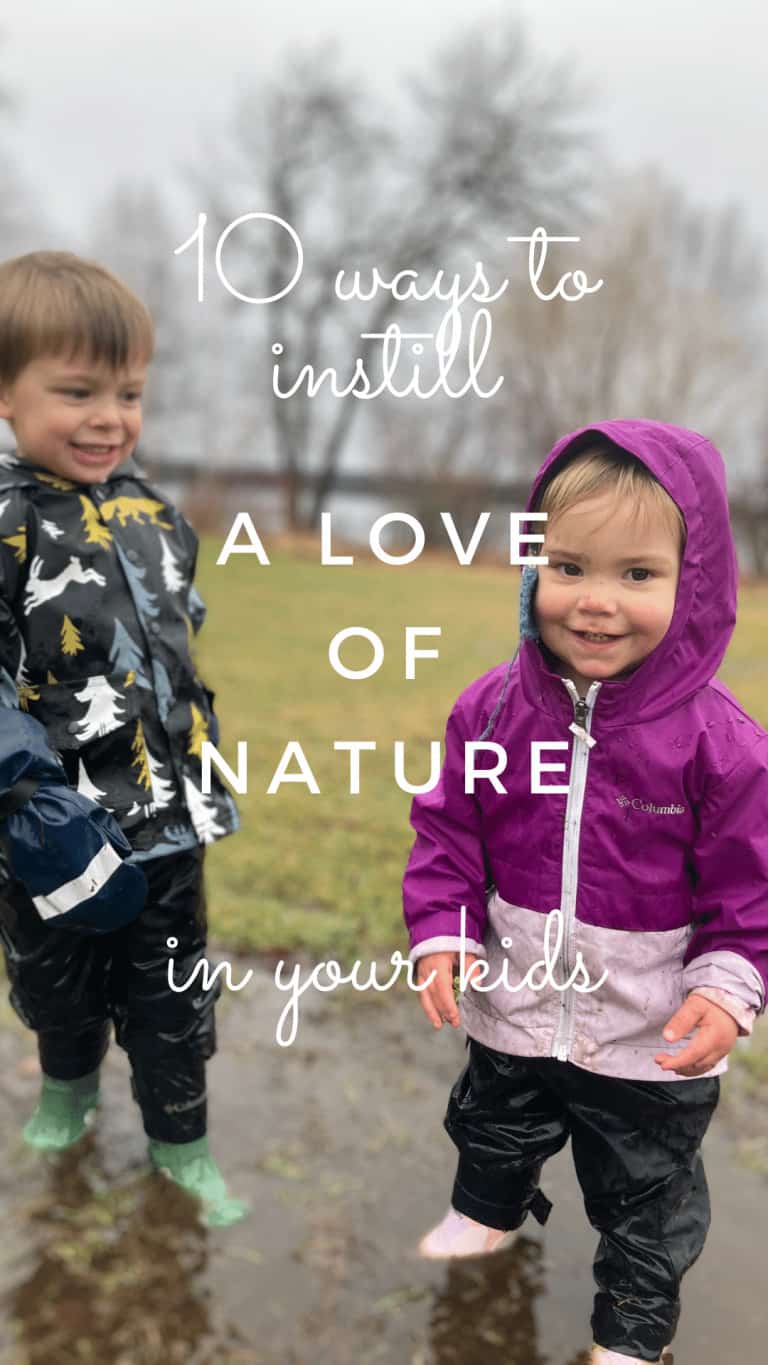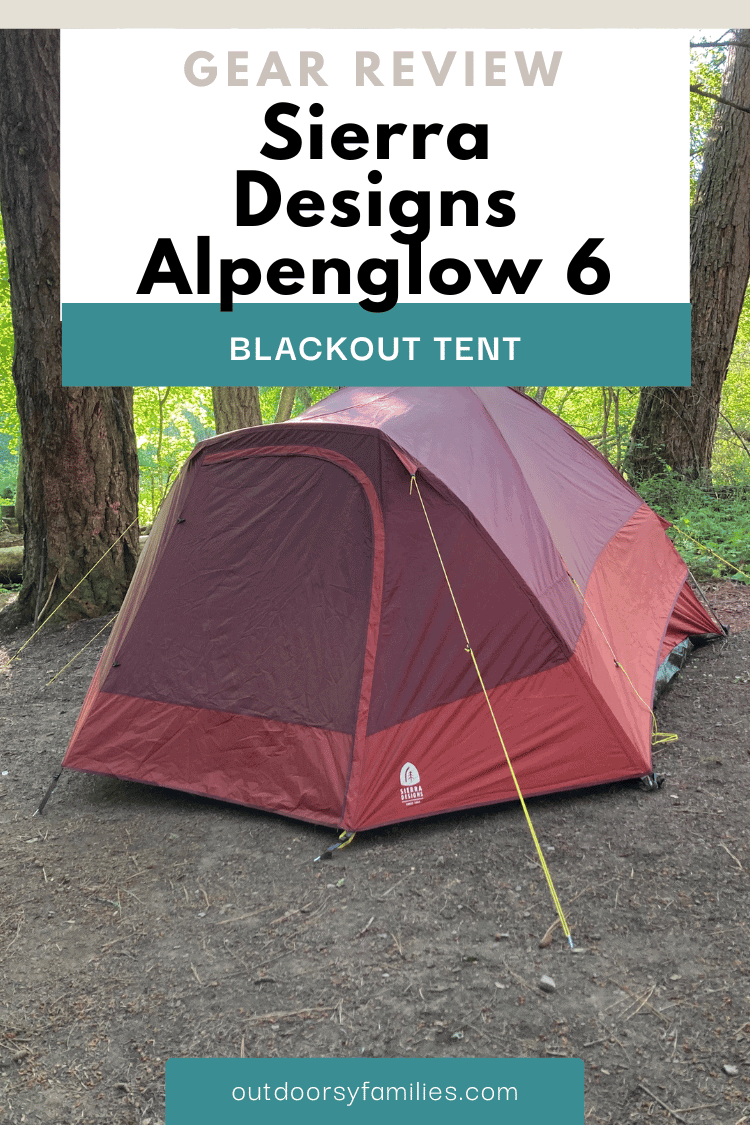Water Safety with Kids
Last Updated on October 8, 2021 by Audrey

Hi and welcome to Outdoorsy Families! This is episode number 12. Today I’m doing my first solo episode since my very first episode! When I planned this podcast I thought I would do a mix of solo episodes and guest episodes. Then I just started having so much fun interviewing others and sharing stories from families getting outside that I’ve now gone 11 episodes without another solo episode! But I’m so excited to talk about today’s topic, which is water safety! We are right in the middle of summer, which means most of us are wanting to cool down in the water. There are so many ways to access water, and I’m sure we all have our favorites. Whether that’s at a community pool or canoeing to a remote campground. We all want to find a way to have fun and get wet. But with kids, there’s this bigger aspect of going to the water, which of course is keeping our children safe. Being at the water with kids means being vigilant and creating expectations for your kids. Even when you have strong swimmers.
I grew up around the water, was a swimmer on a swim team from elementary school through high school, and lifeguarded and taught swim lessons. I’ve also led trips with kids of all ages on the water from canoeing and rafting to sailing. Now that I’m a parent, water safety is so important for myself and my husband. Especially since we live on waterfront property and are in and around the water almost every day. Our two little kids are nonswimmers and with this much waterfront access, it makes every adventure outside a time to practice water safety.
As I’ve mentioned before, we live at a summer camp on a lake in northern Minnesota. This is our second summer here. It’s also the first summer that camp has been happening while we’ve lived here. Last summer camp didn’t happen because of COVID. The weekly worship service was recorded and then posted onto the website. One particular Sunday we were outside on the lawn after recording worship, just chatting with some of the other staff when I noticed River wasn’t where he was playing a minute ago. We began calling his name and looking around for him. That’s when one of the other staff saw him. He was on docks. Alone. At two years old. I quickly went down to him and reminded him that he can’t get on the docks without an adult. In those few unsure moments of where he was, my heart felt like it sunk into my stomach. When I saw that he managed to get all the way down to the waterfront in such a short time, I felt sick thinking about the potential worst-case scenario that can happen when a toddler is at a waterfront alone. Fortunately, he was fine and we had a huge wake-up call as to how quickly he could go from being beside us to at the waterfront. Since then, I have been more vigilant with keeping my eyes on the kids. I even use the same practices I used as a lifeguard! I am always scanning the area and making sure I see both of my kids every few seconds. The southeastern end of the property is all waterfront, and this wake-up call helped me see that I needed to be more aware to keep my little ones safe.
As I was researching this episode, I was surprised to read the statistics behind childhood drowning. Did you know that drowning is the leading cause of injury-related deaths for children between the ages of 1 and 4? I knew this number was high, but I really didn’t know it was this high! The other scary thing about children drowning is that it can happen in as little as one inch of water! For young children, most of these deaths occurred while swimming in pools. However, most child-related drownings occur in open water, such as lakes, rivers, reservoirs, oceans, etc. I was also surprised to learn that of children who drown in open water, 49% of those kids are between the ages of 15 and 19. And 72% of drowning-related deaths will happen to boys.
Now that I’ve shared those scary statistics, let’s talk about what you can do to prevent drownings and keep your kids safe while having fun in the water. I love the information provided by safekids.org. They have simple tips that are easy to implement for any family. Here are their top tips for safe swimming.
-
Watch kids when they are in or around the water. When you are watching your kids make sure that you’re not getting distracted by other things, like your phone, a conversation with another adult, or those really delicious snacks you’re enjoying. Keep young ones within arm’s reach.
-
Choose a water watcher. If you’re hanging out with several adults, choose one or two to watch the kids as they swim while the others socialize. It’s this person’s job to stay focused on the kids. Trade out in shifts, so everyone can enjoy hanging out together, and there’s always a fresh pair of eyes on the swimmers. Safekids.org suggests switch water watchers every 15 minutes.
-
Teach children how to swim. Enroll your kids in swim lessons when they are ready. I know this has been more challenging with the pandemic, and in our area swim lessons finally opened up to summer, but got filled really quickly. When you do enroll your children in swimming lessons make sure you choose an instructor that is American Red Cross certified.
-
Make sure kids learn the five water survival skills. Children should be able to
-
Step or jump into water over their head and return to the surface.
-
Turn around in the water and orient to safety.
-
Float or tread water.
-
Combine breathing with forward movement in the water.
-
Exit the water
-
These skills are the American Red Cross’s 5 basic water safety skills. I have seen some amazing videos of really little kids learning these skills. Mine have not mastered these skills yet, which is why we always use lifejackets and always supervise water activity closely.
-
Teach children that swimming in open water is different than swimming in a pool. I already mentioned that open water is the most likely place that a child will drown. Teach your kids to be aware that open water includes quickly changing depths, currents, low water visibility, uneven surfaces, and other hazards.
-
As a parent, learn CPR and basic water rescue skills.
I love these tips for practicing water safety with your family. I will also add that as kids get older and become stronger more independent swimmers, you could designate that they are always swimming with a buddy. Also, do frequent buddy checks as a family to make sure that everyone is accounted for. Every camp I’ve worked with has done a buddy system like this. And it’s so important that everyone is doing frequent check-ins so you know that everyone is staying safe.
Since we live on waterfront property, we made family rules around water right away, even when River was very little. One of our biggest rules is that the kids cannot get on the docks without an adult with them. Our kids love to run down toward the docks, but we always remind them that they must wait until we are there to walk on the docks. We also always have the kids’ lifejackets on when going on the lake in any watercraft. This is state law in Minnesota, and honestly, I think every state has a law in place about having PFDs on the boat for each person and PFDs on young children. We have a motorboat and we get the kids’ lifejackets on before we get on the boat. Richie and I have lifejackets on the boat, as well as a throwable PFD. We do not wear our lifejackets while on the motorboat. However, we often use them when we swim off the boat with the kids. The added buoyancy just makes swimming in open water easier and more enjoyable. It allows us to be more playful instead of concentrating just on swimming and treading water. We also go out canoeing and paddleboarding with the kids. When we are on these smaller boats the whole family wears lifejackets. In a smaller craft, the chances of going into the water are higher and we want that additional floatation to keep ourselves safe while keeping the kids safe. Also uprighting the vessel that may have capsized is going to be a lot easier with a life jacket on. I want to add that although they are uncomfortable for young infants, life jackets are still legally required for young infants when they are on a watercraft. So yes, I know your 6-month-old is probably going to hate being in a life jacket. But as an adult, you need to make the call to keep them safe first and foremost (and follow the law.) I’ll add both our kids were in life jackets on boats as little babies. And both of them hated it! Plan on taking a short trip out, to begin with for an infant and work up to longer boating adventures. Hattie’s first canoe ride was a 10 minute screamathon across the bay of the lake right in front of our house. It was not fun for anyone. However, with each life jacket experience, my babies became more comfortable with wearing one. They also grew into them better! By the end of last summer, Hattie was totally comfortable in her life jacket. She happily wore it without complaint!
We go down to the beach at camp most days. When I go down there alone, along with the snacks, towels, sand toys, bug spray, and sunscreen, I always bring everyone’s life jackets. Both my kids know that before they can get in the lake they need their life jackets on. We have a shallow swim area at camp, and a buoy line separating the deeper water. At three feet tall, River can touch throughout the whole shallow swim area. He likes to have some independence in exploring the area. I have peace of mind knowing his life jacket is going to safely keep him floating upright if needed. With Hattie, I keep her within arm’s reach. She is still wearing an infant life jacket with a head pillow, which puts her very quickly onto her back. This still makes her a little nervous. At one and a half, she’s also more likely to slip in the water and need my help getting upright.
I have talked a lot about our life jacket use and I wanted to clarify some things for what to look for in a life jacket for young children. First of all, you will want to choose a life jacket that is US Coast Guard Approved. There are 5 types of PFD’s that are US Coast Guard Approved. A life jacket is a PFD designed to save lives and keeps your head above water even when unconscious. It is fastened around the user and provides buoyancy typically through a foam core. When shopping for an infant life jacket, you want to purchase one that includes the headrest or pillow and has the majority of its buoyancy near the front of the body. It should have a strap that goes between the legs for additional security. This will put the infant automatically on their back in the water, with their head up. These types of life jackets are typically approved for up to 33 lbs. The next size life jacket is a child life jacket. It’s usually approved for children between 33 and 55 lbs. It does not typically have the head pillow but does have the strap between the child’s legs. It’s easier for kids to swim around, while still providing enough buoyancy to keep your child’s head above water if an accident occurred. While looking at our life jackets, I noticed that the weight limits on them can vary. There are so many life jackets on the market. I think the two most important things to look for in a life jacket is that it fits your child at their current weight and is US Coast Guard approved.
Since we are near the water, in some ways I feel like I always need to be water safety prepared. When our kids want to play outside while I’m doing something inside I close our baby gate on our deck to create a kid-friendly outdoor environment. I also keep a close eye on them as we play around camp, even when our activities are not specifically in the water. It is so easy for them to get to the waterfront. So every time we’re outside I try to keep a close watch on them. We also are near a country road with a 55 MPH speed limit and have people visiting camp frequently, so there’s a lot to always be watching out for.
So I’ve talked with you about recommended tips, I’ve discussed our family plans when it comes to playing at the water. Now how do you make a plan for your family? I think the most important thing to do is first look into the space you’ll be using. If you’re swimming at a lake, choose to swim in a designated swim area. If you’re at the pool, find the area that is safest for your family’s playtime. Next, discuss your plan for watching the kids with the other adults that will be joining you. Finally, talk with your kids about the rules for staying safe at the water. These can include having a buddy, being close enough for mom and dad to reach them, walking on docks with adults, and also walking on the pool deck. If you are going out on any kind of watercraft, kids need life jackets on. No exceptions. If you are renting a space with a waterfront, check out the area before you let your kids go swimming. Look for drop-offs, currents, and any other hazards and point those out to your kids. If you and your family have a plan for your water adventures, you will all have a safer and therefore better experience at the water!
Today I shared about ways to practice water safety while adventuring with your kids this summer. Some easy ways to do this is by implementing the 6 tips from safekids.org. You should also buy a US Coast Guard-approved life jacket that fits your child at their current weight. Lastly, I shared our family’s plan and rules for water safety and gave you suggestions for how to put your own water safety rules in place.
Safekids.org Information:
https://www.safekids.org/poolsafety
https://www.safekids.org/checklist/open-water-safety-checklist
https://www.safekids.org/sites/default/files/water_safety_study_2018.pdf
Useful Links for more information:
https://www.safekids.org/other-resource/useful-links-swimming-and-boating-safety
American Red Cross Water Safety Parents Resource Guide:
US Coast Guard Life Jacket Information:
https://uscgboating.org/recreational-boaters/life-jacket-wear-wearing-your-life-jacket.php
https://uscgboating.org/images/howtochoosetherightlifejacket_brochure.pdf
instagram.com/outdoorsy.families

